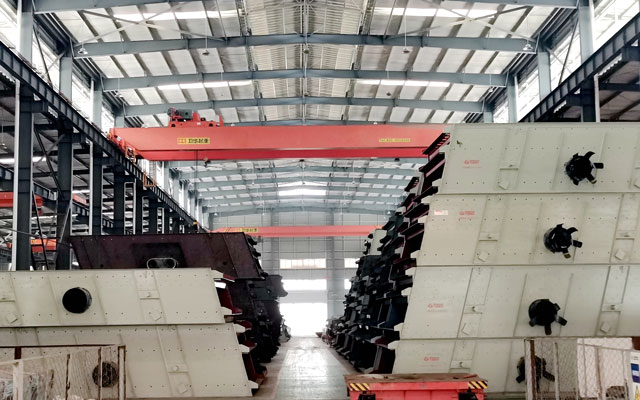
2025-08-06
Look up in many factories, warehouses, shipyards, or foundries, and you’ll likely see a powerful, silent giant gliding overhead: the bridge crane. These essential pieces of industrial equipment are fundamental to moving heavy loads efficiently and safely. But what exactly are they?
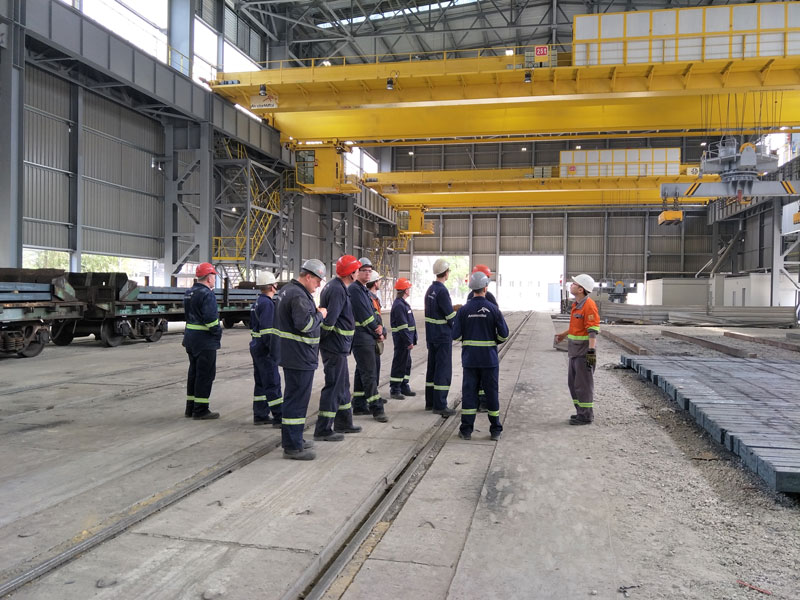
The Core Concept: A Bridge on Tracks
Imagine a bridge. Now imagine that bridge can move horizontally along tracks mounted high up on the walls or support columns of a building. That’s the essence of a bridge crane.
- 1. The Bridge: This is the main horizontal beam (or beams) that spans the width of the work area. It runs on rails installed on elevated runways along either side of the bay.
- 2. The End Trucks: Mounted at each end of the bridge, these house the wheels that travel along the runway rails, enabling the entire bridge to move lengthwise (commonly called the “X” direction).
- 3. The Hoist and Trolley: Riding along rails on the bottom flange of the bridge beam is the trolley. Attached to the trolley is the hoist – the mechanism that actually lifts, lowers, and carries the load via a hook, magnet, vacuum, or specialized attachment. The trolley moves the hoist sideways across the width of the bridge (the “Y” direction).
- 4. The Runway: The fixed rails, supported by the building structure or freestanding columns, upon which the bridge travels.
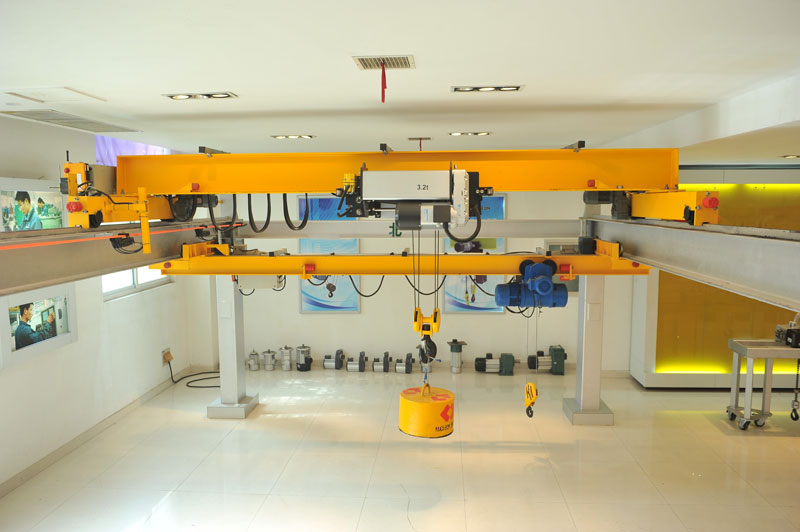
How It Works: Mastering the Three Axes
This simple design provides incredible flexibility:
- 1. Hoist Movement (Z-axis): The hoist lifts or lowers the load vertically.
- 2. Trolley Movement (Y-axis): The trolley moves the hoist (and load) laterally across the width of the bridge.
- 3. Bridge Movement (X-axis): The entire bridge moves longitudinally along the runway, covering the length of the bay.
This combination allows the operator to position a load precisely anywhere within the crane’s rectangular operating envelope – a vast area beneath the crane’s path.
Why Use a Bridge Crane? Key Advantages
- 1. Unmatched Lifting Capacity: Bridge cranes handle the heaviest loads, from a few tons to hundreds of tons, far beyond the capacity of forklifts or jib cranes.
- 2. Maximized Floor Space: By operating overhead, they free up valuable floor space for production, storage, or movement. No aisles needed for ground-based lifting equipment.
- 3. Improved Safety: Moving heavy loads overhead significantly reduces the risk of accidents involving personnel or other equipment on the shop floor. Modern cranes feature overload protection and emergency stops.
- 4. Enhanced Efficiency and Productivity: They enable faster movement of materials over large areas compared to manual handling or smaller equipment. Streamlines production flow.
- 5. Precision Handling: Operators can position heavy loads with great accuracy, essential for assembly, machining, or placement tasks.
- 6. Reduced Product Damage: Controlled, direct lifting paths minimize the risk of bumping or dropping loads.
- 7. Versatility: Can be equipped with various hoists (chain, wire rope), lifting attachments (crane hook, magnets, grabs, vacuums), and controls (pendant, radio remote, cabin).
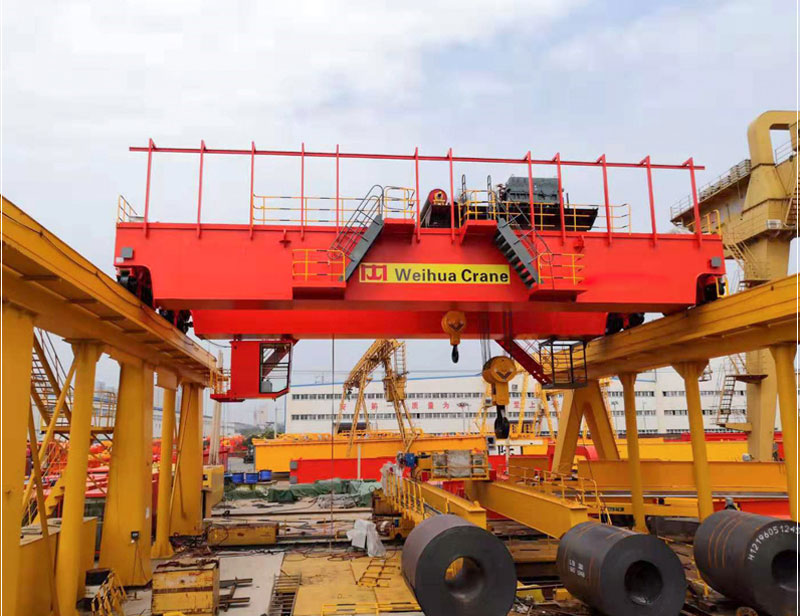
Types of Bridge Cranes
The two most common configurations are:
- 1. Top-Running Bridge Cranes: The bridge runs on top of rails mounted on runway beams supported by the building columns or freestanding columns. This design offers the highest lifting capacities and hook heights.
- 2. Underhung Bridge Cranes: The bridge beams are suspended below the runway beams, which are typically attached directly to the ceiling support structure. Ideal for lower headroom situations or lighter capacities.

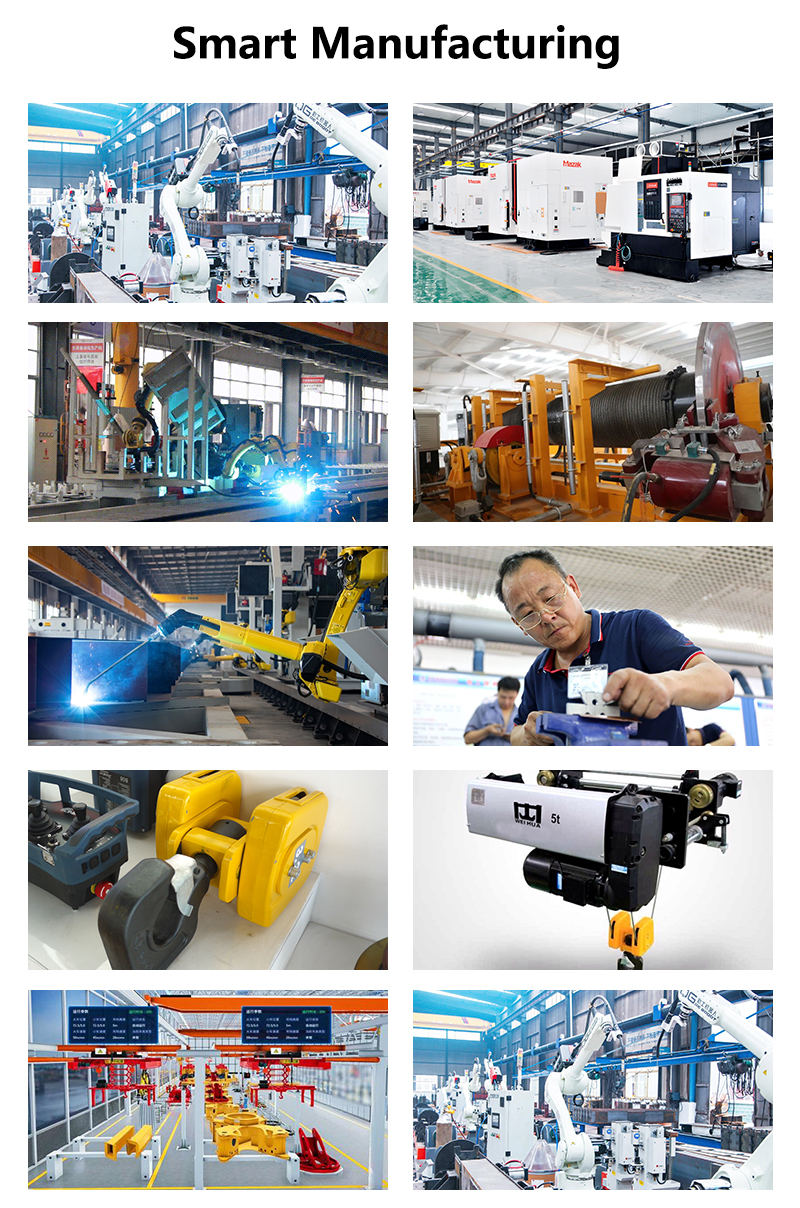
Modern Innovations
While the fundamental principle remains, bridge cranes have evolved:
- 1. Smart Controls: Integration with plant systems, remote monitoring, diagnostics, and programmable paths.
- 2. Variable Frequency Drives (VFDs): For smoother acceleration, deceleration, and precise load control.
- 3. Advanced Safety Systems: Anti-collision systems, zone limiting, and load monitoring.
- 4. Lightweight Designs: Using high-strength steel for increased capacity without excessive weight.
A bridge crane isn’t just a piece of equipment; it’s an integrated overhead lifting system that forms the backbone of heavy material handling in countless industries. Its ability to utilize overhead space, lift immense weights safely, and cover large areas efficiently makes it an indispensable tool for boosting productivity and safety in demanding industrial environments.
Considering a bridge crane for your facility? Consult with a reputable crane manufacturer or service provider to determine the optimal type, capacity, and configuration for your specific needs.






Lascia qui il tuo commento